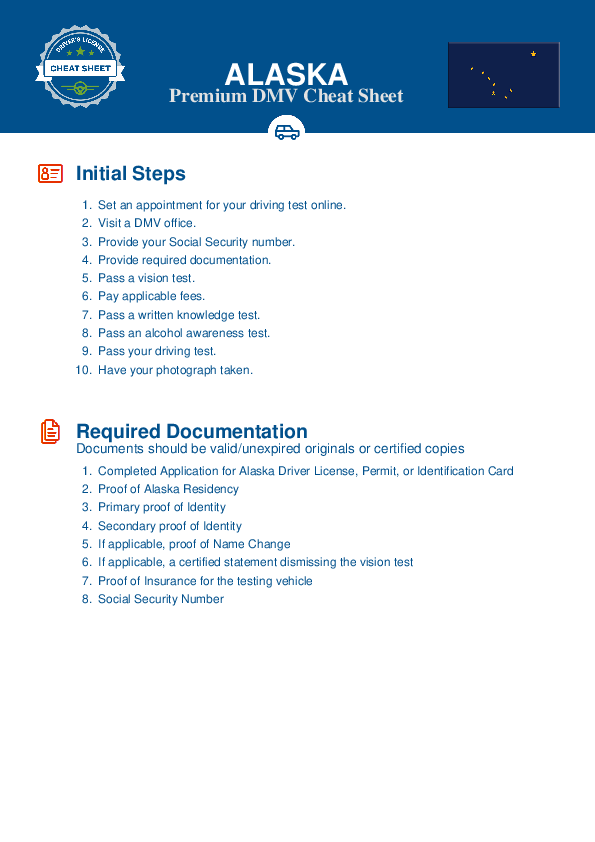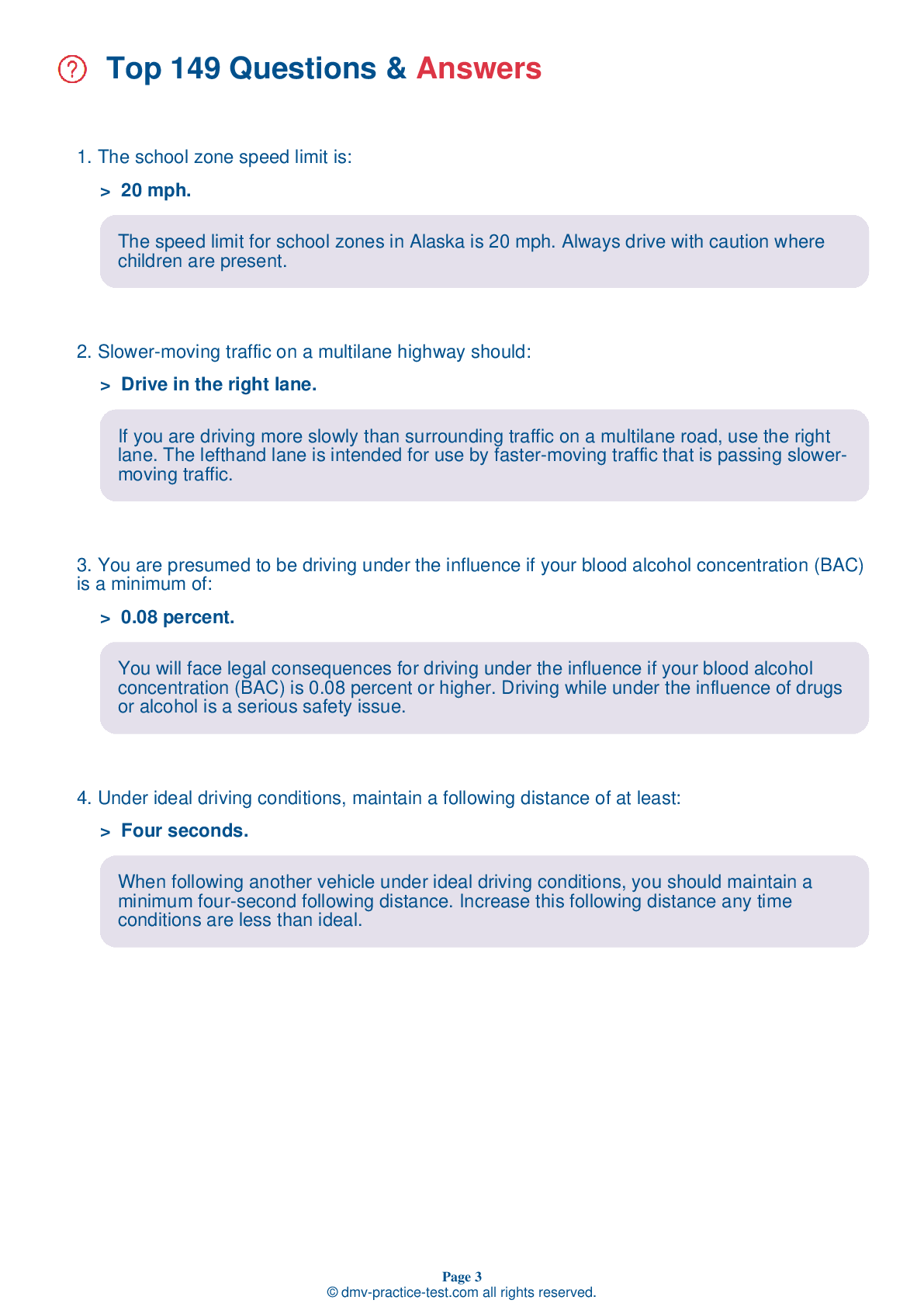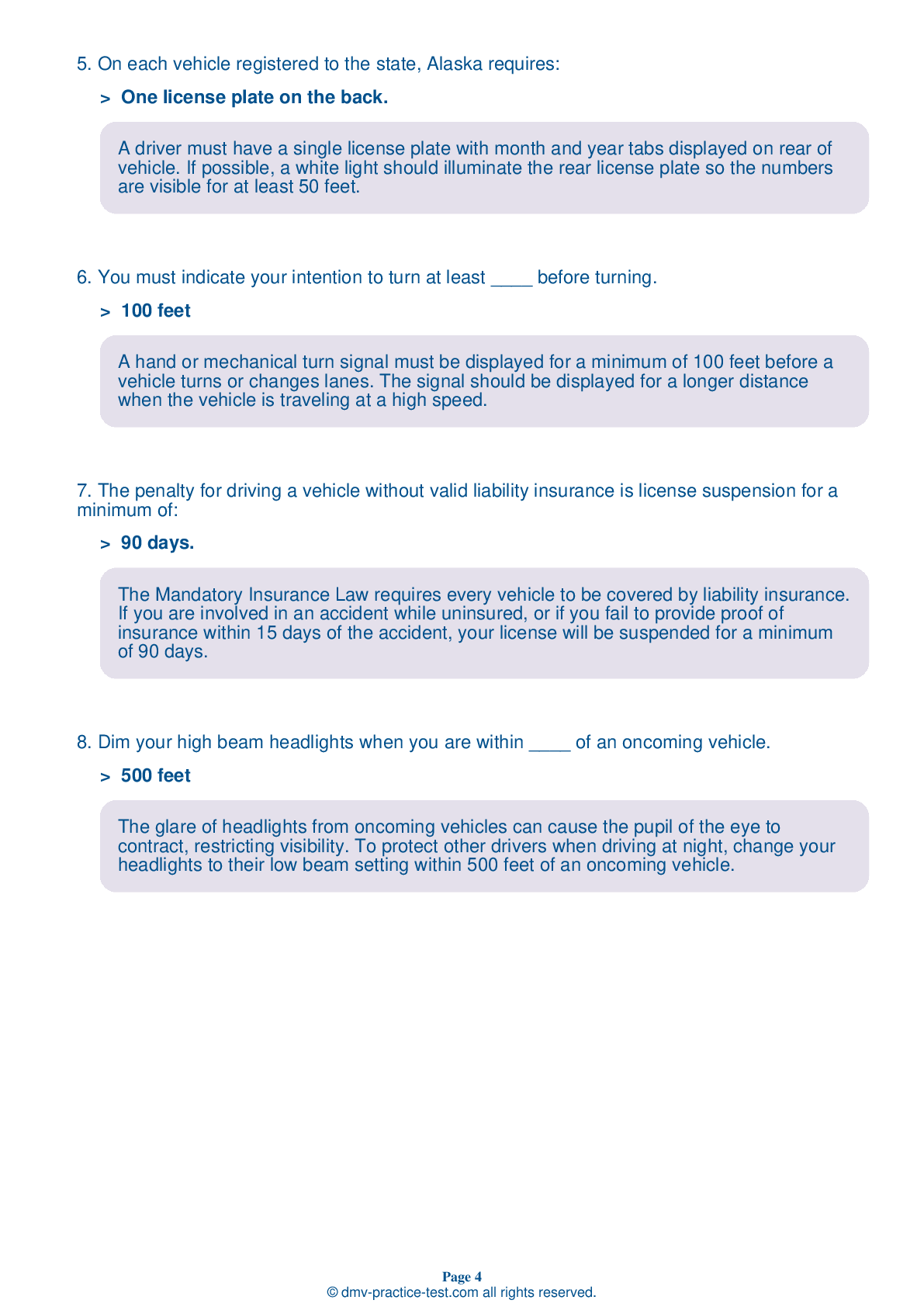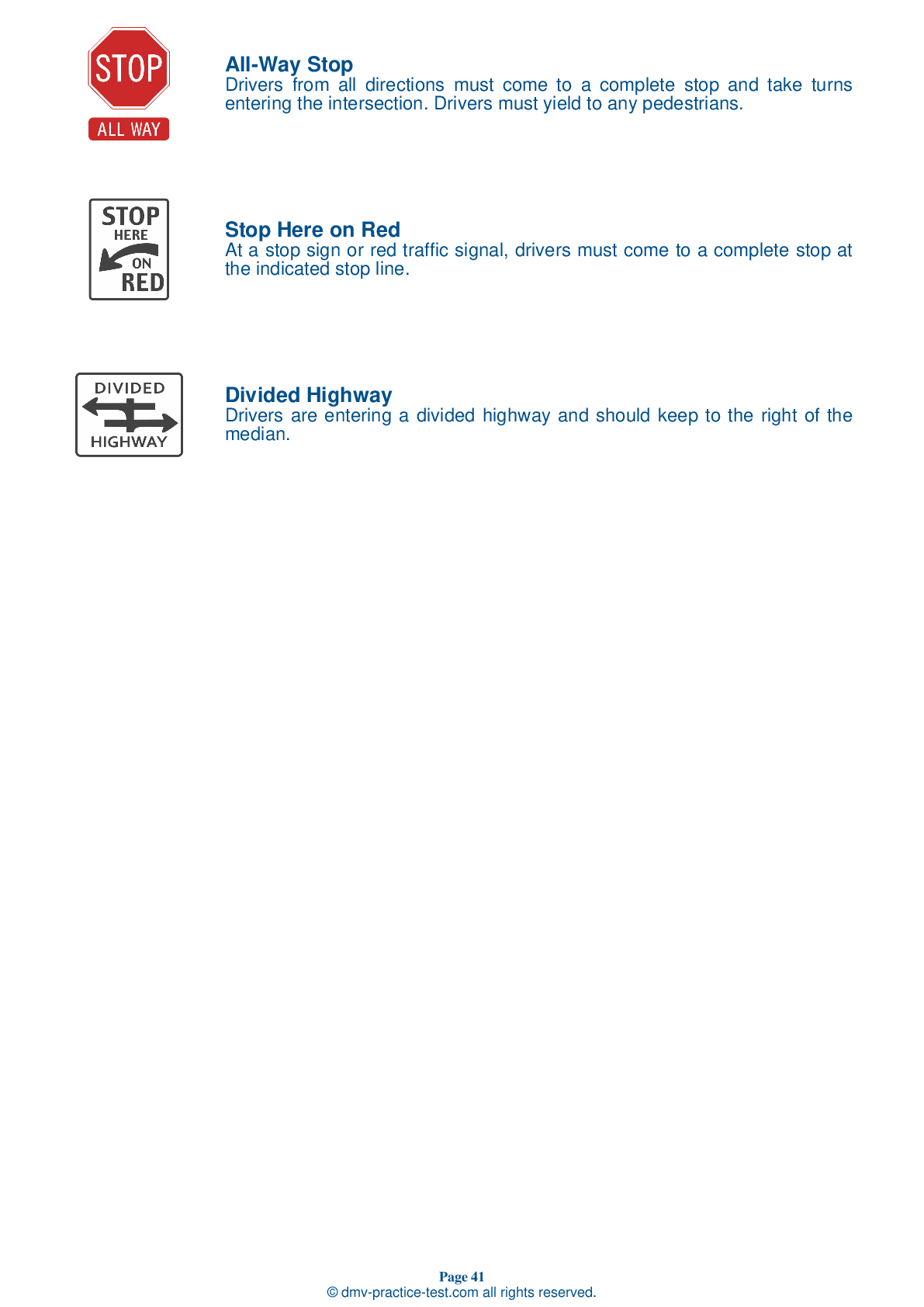FREE Alaska DMV Practice Test #8 Page 2 of 3
This Alaska DMV practise tests has just been updated for January 2025. It contains questions based on the most essential traffic signs and limitations from the Alaska Driver Handbook for 2025. Use actual questions that are very close (often identical!) to the DMV driving permit test and driver's licence exam to prepare for the DMV driving permit test and driver's licence exam.
To help you recall the topics, each practise test question includes a suggestion and explanation. The written component of the official DMV test will include questions about road rules, traffic signs, and driving statutes, as well as information from the Driver Handbook.
To get the required passing mark, you must correctly answer 16 out of 20 questions. Take our DMV practise exam to help you prepare for your Alaska instruction permit or driver's licence.
The DMV exam is available in multiple languages.
Using any form of testing aid will result in an automatic failure, and the DMV may take further action against your driver's licence, so don't do it.
7 . How long does it take, on average, to cancel the effects of one 12-ounce can of beer?
It takes an average of one hour to cancel the effects of one drink, though many factors can increase that length of time. The best policy is to not drive if you have been drinking.
8 . What is the minimum mandatory jail sentence for a first-time DUI conviction?
Driving Under the Influence (DUI) is a crime that carries a mandatory jail sentence. The minimum mandatory penalty for a DUI is three days in jail. Fees and fines will be charged in addition to mandatory jail time.
9 . If a driver sees an animal on the roadway:
Be very cautious any time you encounter an animal on the roadway. Pass the animal slowly to avoid startling or frightening it.
10 . What should you do when you see this sign?
.png)



